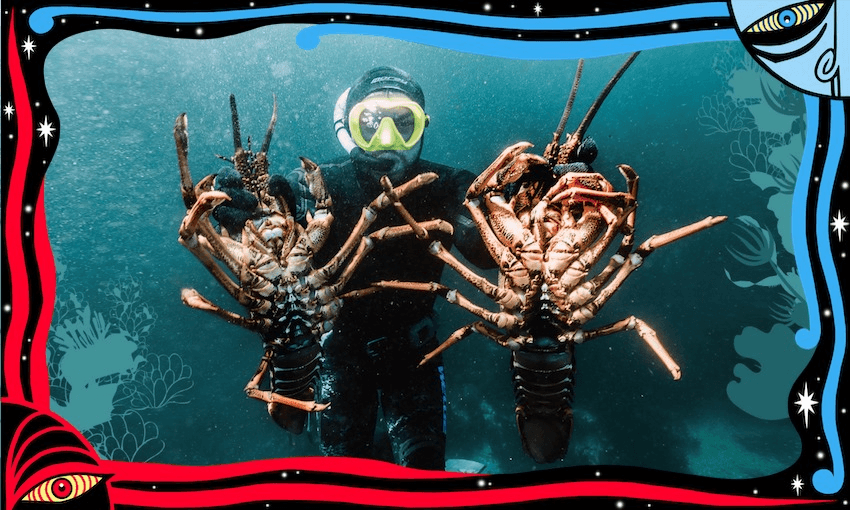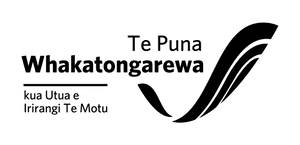Dion Aupouri-Akuhata is empowering whānau in Te Tairāwhiti with the skills, tikanga and knowledge to gather kaimoana safely and sustainably. He’s part of a rising swell of moana-minded Māori who are growing into the roles of providers and kaitiaki for their families and hapū, writes Te Kuru Dewes.
From a whakapapa of kaimoana gatherers, Dion Aupouri-Akuhata was born to be in the water. His father was a commercial diver who passed on his “aqua-abilities” to his son.
“I was always around kai gathering; that’s what our people did. It was intergenerational,” says Aupouri-Akuhata.
Tikanga has always guided his relationship with Tangaroa, both in a practical and spiritual sense.
“The first catch is to give thanks back to Tangaroa. That’s your offering. Even if you get a huge pāua, you always give it back in the state that you found it.”
“If you’re gathering on the shore, never turn your back on Tangaroa” is another firm tikanga that ensures divers are safe, along with not eating if there are divers in your group still diving. There are also tikanga that keep Tangaroa in your favour, such as always doing a karakia before going out in the water. Aupouri-Akuhata says he also talks to the atua the entire time he’s out diving.
And then there are tikanga that go unquestioned in te ao Māori. “We were always taught to mimi on our stuff before we go out, because that’s what our uncles told us to do”, he says.
Follow Nē? on Apple Podcasts, Spotify or your favourite podcast provider.
It’s this knowledge of the moana accumulated over years in the water with his whānau that led Aupouri-Akuhata to go deeper. He pursued a career as a commercial kina diver in Te Waipounamu, making a name for himself in the Spiky Gold Hunters TV series.
Upon returning to Te Tairāwhiti, his partner Reremoana Sheridan encouraged him to share all he had learned about the moana with whānau at home. And so Coasty Kidds was born.
“I was definitely wary of sharing my life on social media. I was very whakamā. It’s not really the coastie way to put yourself out there and promote that lifestyle.”
Starting off as a Facebook Page, Coasty Kidds provided a place for people to ask questions about gathering kaimoana, ranging from what gear to use to tips for saving people in a shallow-water blackout.
The tikanga-based and whānau-oriented business that started with selling towel-ponchos has grown into an iconic brand that is synonymous with Te Tairāwhiti. In just a few years, the Coasty Kidds Facebook page has amassed over 10,000 followers, and Aupouri-Akuhata and Sheridan have helped dozens of rangatahi from the East Coast be more confident in the water.
Their collective vision is to empower rangatahi in the water by providing them with the right gear, skills, tikanga and knowledge so they can gather kai for themselves and their communities.
“Coasty Kidds isn’t about how much kaimoana we get, it’s more about how we get it. [It’s about] the preparation, mindset-wise, and keeping in mind that tikanga is a huge part of our kai-gathering.”
The core values of Coasty Kidds are safety and sustainability, says Aupouri-Akuhata.
“We don’t go out and get our legal limit. We can sustain ourselves with 10 kina, and two pāua.
“We don’t need a week’s worth of diving to sustain our little whānau.”
Making sure whānau get safely out of the water to return home with their catch is just as important a part of Aupouri-Akuhata’s mahi.
The number of drownings in New Zealand per capita has slowly been rising over the last five years, Water Safety New Zealand statistics show. Last year, 57 Māori lives were lost to preventable drownings, up from 42 the year prior.
“A lot of the stuff is preventable. I see people dying in the moana and I want to help our people to grow and develop our skills,” says Aupouri-Akuhata.
For those willing to go a little deeper for a feed of kina, Aupouri-Akuhata runs a scuba school international (SSI) course, with tikanga at its heart, and training in free-diving, scuba or spearfishing disciplines.
Aupouri-Akuhata wants to empower divers to “get them out of the rock pools” and out exploring harder to reach mahinga kai spots, to ensure the same spots aren’t being over-fished.
When he’s out free-diving for personal catch, he bases all his diving on depth and is particularly mindful during summer of how many people are also diving in the area.
“I work from about 12 metres to 17 metres, to 20-25 metres. For me I consider where the area is, and if it’s being fished I go deeper, so I know that it’s sustainable.”
While Aupouri-Akuhata was “brought up diving in shoes, jeans… and a hoodie when it was cold”, he stresses the importance of divers using good gear to keep themselves safe.
“Those days are over,” he reckons. “It’s affordable and achievable now to get the proper gear.”
Although, he says, nothing beats the feeling of free-diving. “It’s the freedom of not having stuff holding onto your back, hoses hanging off you, all the noises you get when you’re scuba-diving. The fish can come up and interact… My mindset is much better when I go free-diving.”
His steady relationship with Tangaroa has played a big part in his maturation and growth.
“If I didn’t have diving, I could have swung in another direction, in terms of parties and that. Tangaroa has definitely saved me in that aspect.”
It’s fair to say Aupouri-Akuhata is more passionate about kaimoana than most, but he’s always disciplined in what he takes. Even though the maximum daily limit for kina is 50 per person, he says he’ll never take that many.
“When I drop kina off to my dad, I’ll drop off six or seven, I know that’s going to feed him. I know he wants more. I know he’s sitting there like, ‘why didn’t you bring me 50?’, and it’s like ‘nah you can’t eat 50’,” he laughs.
It can’t be easy holding back, considering kina is Aupouri-Akuhata’s favourite kaimoana. And how does he eat it? Straight out the shell, of course.
Follow The Spinoff’s te ao Māori podcast Nē? on Apple Podcasts, Spotify or your favourite podcast provider.

